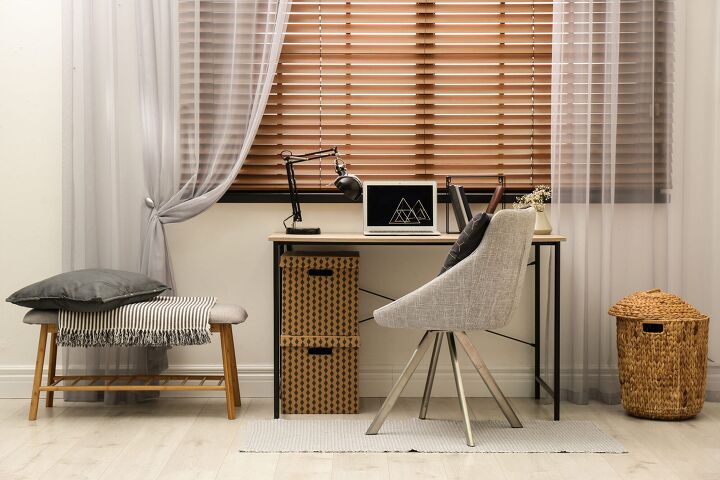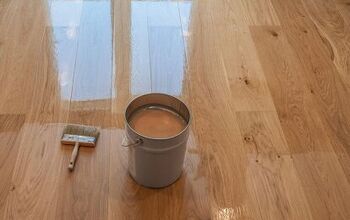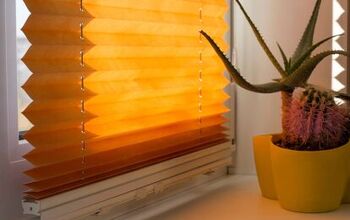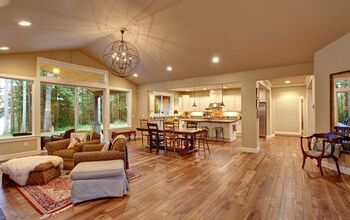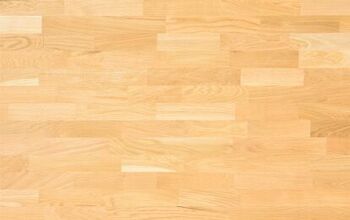What Are The Pros And Cons Of Faux Wood Blinds?

Your choice in window treatment has a major impact on the ambiance in your living spaces and the overall design of your interiors. Blinds are among the most common, if not the most common, window coverings out there. Available in a wide range of materials, they are excellent for those who want complete control over the shade and light that enters a space.
When it comes to choosing the right material, faux wood blinds are one of the many options available. They are designed to look like the real thing, but are more durable, affordable, and easier to maintain. Though, the major drawback to faux wood blinds is simply that they aren’t the real deal so they don’t carry the same richness that comes with genuine wood blinds. Many homeowners love the appearance of wood blinds, but find themselves torn between whether faux wood or real wood is the right way to go.
Of course, the most crucial considerations when choosing blinds are your budget, taste, lifestyle, and needs. In order to help you come to a conclusion on whether or not faux blinds are best for you and your home, we’ve put together this brief guide.
Do You Need Window Blind and Shade Installers?
Get free, zero-commitment quotes from pro contractors near you.

Real Wood vs. Faux Wood
Should I choose real wood or faux wood for my window coverings? Which option offers better insulation? Do faux wood blinds actually look like wood? Are faux wood blinds or real wood blinds better for rooms with high humidity? These are probably some of the many questions you have while deciding which window treatment best suits your needs.
If you’re stuck between real wood and faux wood for your blinds, you’re not alone. While both are excellent choices for window treatments, there are considerations that may sway you toward one or the other. With that said, let’s take a look at each of your options in further detail.
Wood Blinds
Real wood blinds can be constructed out of a variety of wood species including ash, abachi, and basswood – with basswood being the most common. Hardwood blinds are known for their elegant, rich, timeless appearance that is visually appealing in nearly any setting. Their luxurious look is why many choose wood blinds for their home – a look that faux wood comes close to but does not match completely.
These types of blinds are available in a wide range of finishes, from a very neutral wooden tone to a basic white to a bold black. When compared to faux wood, real wood blinds tend to be lighter in weight. Though, they aren’t as versatile. Wood blinds are not recommended for use around children or pets or in areas of high humidity. They are highly prone to cracking, splitting, and warping.
Additionally, genuine wood blinds are notoriously expensive, which is why many seek out faux wood as a more cost-effective alternative.
Faux Wood Blinds
Usually made from vinyl or a combination of wood and synthetic materials, faux wood blinds are designed to look like real wood. The composite material they are made out of features an embossed wood grain. These blinds also come in a wide range of colors, making it easy to find the look you’re going for.
The following is a breakdown of the pros and cons that you can expect with faux wood blinds:
The Pros of Faux Wood Blinds
1. Affordability
The synthetic materials used in the construction of faux wood blinds are, in general, cheaper than genuine wood. In fact, this is often the reason why many choose to opt for faux wood blinds over real wood blinds. Since you get more for your money with faux wood blinds, you can decorate more windows in your home without having to stretch your budget.
Continue reading for our cost comparison between real wood blinds and faux wood blinds.
2. Convenience
Faux wood blinds come in a variety of hues, so you should have no trouble finding the appropriate shade. Most home improvement stores stock a number of composite wood blinds in the most common sizes, making them a convenient choice for homeowners. Real wood, on the other hand, usually has to be custom ordered.
3. Moisture Resistance
When compared to real wood, faux wood blinds are far more moisture resistant. Blinds that are made from natural wood are more prone to the damaging effects of humidity like warping, contracting, expanding, rotting, and mold growth.
As such, faux wood blinds are recommended for use in high moisture areas of the home such as the laundry room, kitchen, and bathrooms. Or, if you live somewhere that has a humid climate, you should strongly consider opting for faux wood over natural wood. Their resistance to moisture can also make maintaining the blinds much easier.
4. Durability
Aside from moisture resistance, faux wood blinds are just generally more durable. In most cases, they are made out of PVC, or Polyvinyl Chloride, which is not as prone to scratching and damage as natural wood is. PVC is a thermoplastic that is made to be fire resistant, offering an additional advantage to these types of blinds.
If maintained well, your faux wood blinds will last you many years without fading or becoming brittle from prolonged exposure to the sun. Faux wood blinds are factory-treated with a UV-resistant coating that protects them from the sun.
5. Environmentally Friendly
Another major plus to choosing faux wood blinds over natural wood is the fact that the manufacturing process is environmentally friendly. Since they’re made from plastic or a marginal amount of wood, fewer trees have to be cut down in order to make faux wood blinds. Meanwhile, the blinds themselves are fully recyclable.
6. Minimal Maintenance
Vinyl is much easier to clean than natural wood, as you can simply use a mild soap and water or other similar products without causing any damage to the blinds. Whereas, if you were to use water on real wood blinds, the material would warp or rot over time. Regular dusting will ensure that your faux wood blinds look clean and good as new.
You can also use a light pH-balanced liquid soap and water or specific rinsing solutions on the blinds to keep them looking fresh. Faux wood blinds can be cleaned as much as required since they aren’t prone to any damage from scratching or moisture.
The Cons of Faux Wood Blinds
1. Appearance
The most prominent disadvantage to faux wood blinds is their appearance, as it will never perfectly match the richness and appeal of real wood blinds. Even the highest quality faux wood blinds will never look exact.
2. Flexibility
Over time, PVC tends to soften and become more flexible due to prolonged exposure to high temperatures. In most cases, faux wood blinds should not be placed in environments where the temperature stays consistently around or above 55 degrees Celsius. These blinds will struggle to survive in direct sunlight in very hot areas of the world.
3. Cannot Be Re-Stained
Since faux wood blinds are constructed out of vinyl or composite wood, they cannot be re-stained at a later date. This means that the color you choose for your blinds is the color that you’ll be stuck with until you decide to replace them.
4. Heavier
Faux wood blinds are usually much heavier than their natural wood counterparts, which can make installation and general handling more challenging.
Cost Comparison – Real Wood Blinds vs. Faux Wood Blinds
| Real Wood Blinds | $40 to $200 each |
| Faux Wood Blinds | $20 to $170 each |
Blinds that are made from real hardwood are typically more expensive than those made from composite wood or vinyl. With that said, real wood blinds usually cost between $40 and $200, while faux wood blinds range from $20 to $170 each. Natural wood can be difficult to maintain and also expensive to replace. Whereas, faux wood is often a great compromise since it has the appearance of real wood without all the upkeep.
Related Questions
Do faux wood blinds turn yellow?
Most faux wood blinds are treated in the factory with a UV-resistant coating. This helps to shield the blinds from sun exposure, but the protection isn’t going to last forever. After several years, the side of the blinds that gets hit by the sun can fade or develop a yellow tinge. Oftentimes, cigarette smoke and some cleaning solutions can also turn faux wood blinds yellow.
How long do faux wood blinds last?
If properly maintained, you can expect faux wood blinds to last between 3 and 5 years before needing to be replaced.
Are faux wood blinds toxic?
Some types of faux wood – depending on the materials used in the construction – may contain unhealthy chemicals that can cause an adverse reaction. Some of these chemicals are very toxic and possibly carcinogenic, as the manufacturing process of PVC products creates a large number of toxic byproducts.
Do You Need Window Blind and Shade Installers?
Get free, zero-commitment quotes from pro contractors near you.

Final Thoughts
While faux wood blinds make look and feel relatively the same as natural wood, their distinct features make them ideal for different environments. Understanding the characteristics and pros and cons of faux wood blinds makes it easier to decide if they are suitable for your home. Your final decision should be based on all the major considerations such as affordability, durability, basic features, and your unique needs.
Related Articles

Jessica considers herself a home improvement and design enthusiast. She grew up surrounded by constant home improvement projects and owes most of what she knows to helping her dad renovate her childhood home. Being a Los Angeles resident, Jessica spends a lot of her time looking for her next DIY project and sharing her love for home design.
More by Jessica Stone



